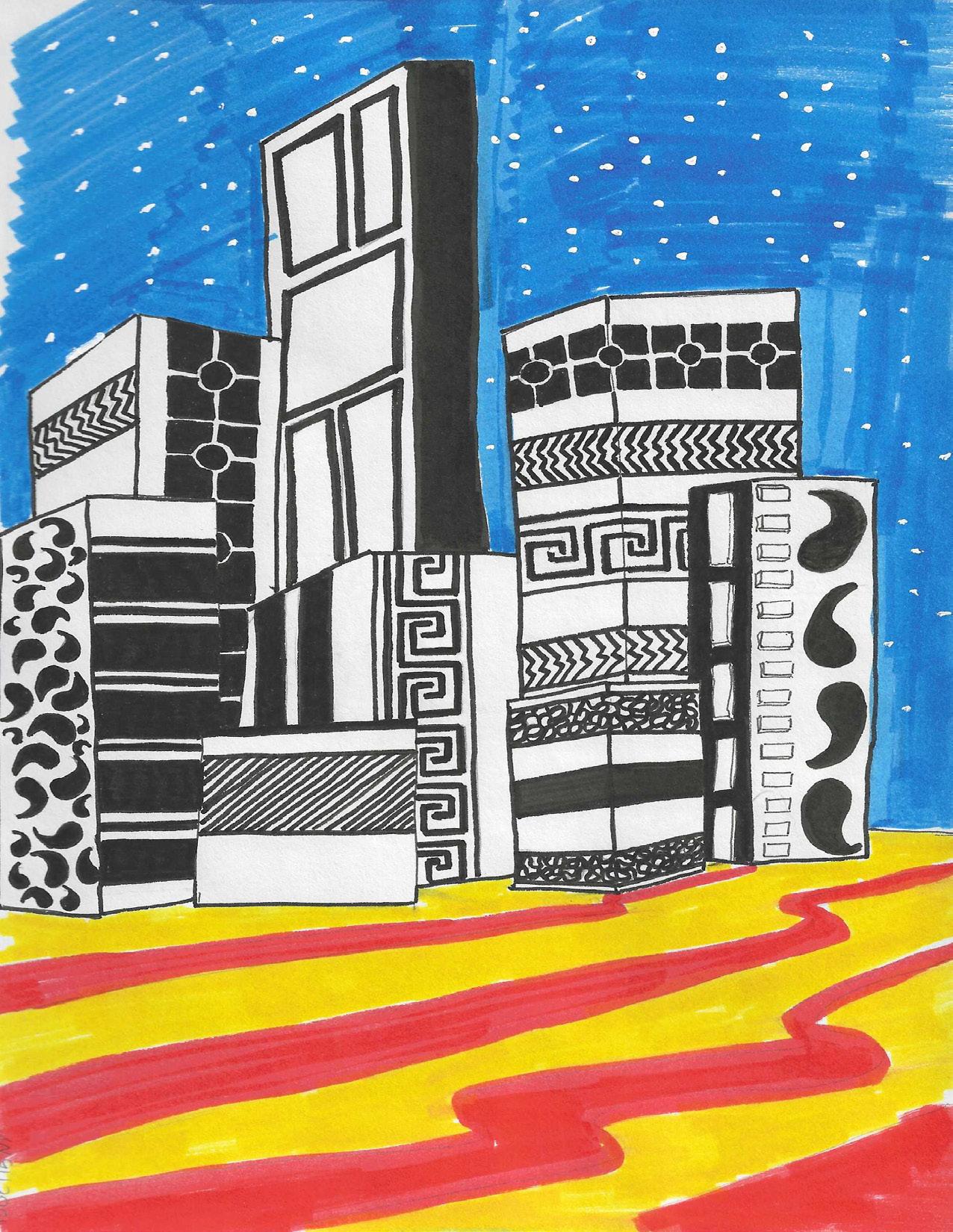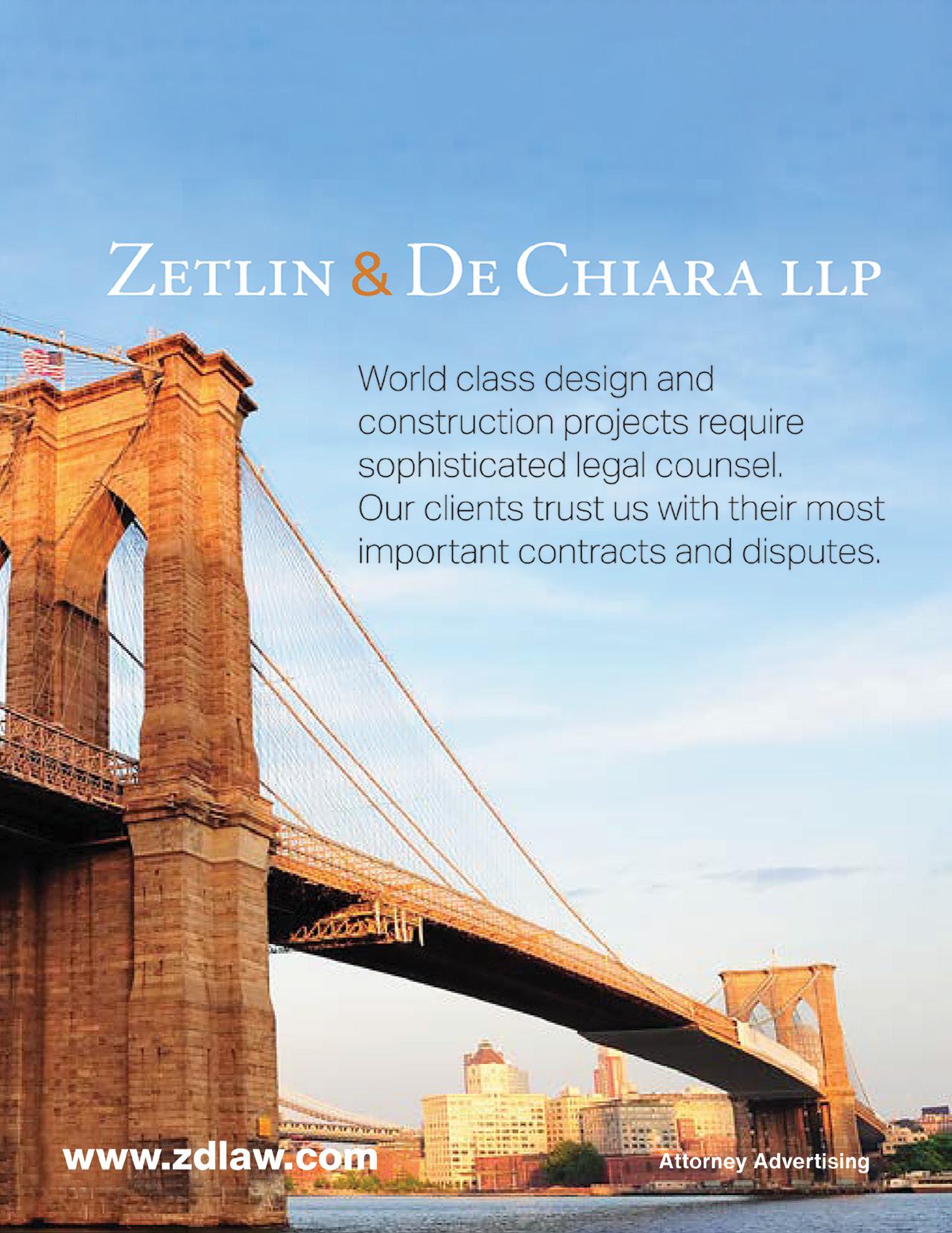
22 minute read
Special Feature: Head of Class
from PYLON: SEP|OCT Issue
by AIA Brooklyn
HEAD OF CLASS

Advertisement
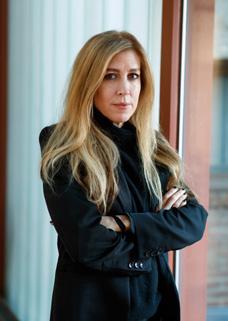
ARTICLE BY MICHELLE DUNCAN AND TALISHA SAINVIL, AIA
INTERVIEW WITH DEAN HARRIS AND CHAIRMAN VAIDYA
Traditionally, September is the time of year when students are beginning a new school year and we’re all starting to think about the end of the year.
Back in March, the country was forced to shelter in place, which meant we had to quickly adjust to a completely different paradigm for everyday life. Students had to switch to remote learning and with this new kind of classroom came a new way of teaching. Thereafter, the murder of George Floyd and the successive murders and brutalization of several Black Americans at the hands of law enforcement forced our nation into difficult but necessary discussions about the centuries-old racial inequality and injustice embedded within our systems.
Within numerous panel discussions held by virtually every organizational body across the profession, Architecture has been reexamining itself, scrambling to figure out its complicity in the perpetuation of its reputation as a domain that is unwelcoming to minorities. With all the talk going on, there are many who have committed not just to discussions about the topic, but to creating the necessary changes needed. This month our spotlight shines on two of Brooklyn’s passionate Architecture educators: Dr. Harriet Harriss, Dean of Pratt Institute’s School of Architecture and Sanjive Vaidya, who are already using their professional positions to bring about the kinds of changes they believe are necessary to ensure that the industry is cultivating and harnessing the power of all its talent.
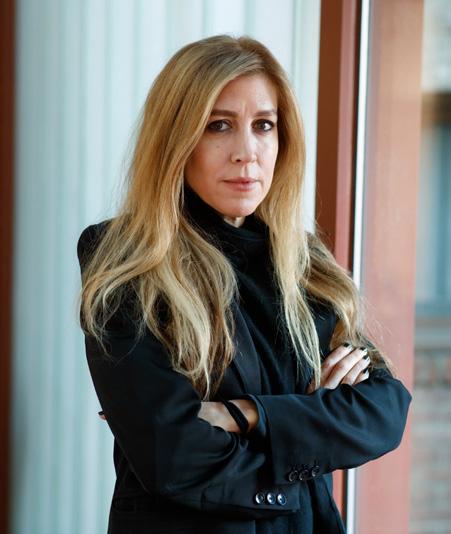
We kicked off our first interview with Dr. Harriet Harriss, who started her tenure as Dean of Pratt Institute’s School of Architecture in August of 2019 — by getting to know a little bit about her’ origins, how she came to Architecture and more specifically, how she feels about architectural education and the role her school is gearing up to play in sharing the future of our profession.
Harriss was born and raised in London and Manchester and, as the daughter of an immigrant single parent, was the first in her family to go to college largely enabled by government grants and scholarships that have since ceased to exist. Mindful of this advantage, affordable education remains one of her core preoccupations, and as Harriss explains, “We all deserve an equal start in life despite our varying circumstances, and access to decent healthcare, education and housing is simply part of that. Having needs — such as the need to be educated—is not something we can address alone, but only through our relationship with others. This interdependency is what makes us human, but what defines our humanity is the willingness to care and provide for each other, and not to use our interdependency as a means to exploit or subjugate each other. We are a species that is capable of ensuring that everyone of us has a right to thrive, and not just to exist, but we don’t always work toward that objective.”
Before attending college, Harriss thought she wanted to study medicine but became acutely aware of the impact of the built environment on well-being while working for a charity in South Africa. Harriss recalled thinking, “If I really want to make a difference then I need to switch from treating the symptoms to addressing the causes. Poor housing was making people sick, specifically, the paraffin burners used for heat and cooking in rooms without ventilation. The residents didn’t need better medicine. They needed better architecture.
“Architecture can be heroic. In the UK, it was the medium through which all of the post Second World War social welfare policies were made manifest — from accessible and affordable housing to school environments that were more conducive to learning and playful interaction. Architecture carries the values and convictions of its social and political context. Penthouses for the elite serve to remind us that private interests are more often prioritized than collective need. That’s what makes
ARCHITECTURE IS OFTEN VIEWED AS COMPLICIT WITH QUESTIONABLE POLITICAL AGENDAS, AND INSTEAD NEEDS TO CHAMPION THE NEEDS OF DIVERSE COMMUNITIES FAR MORE.
Architecture one of the most relevant and potentially powerful disciplines, especially if its primary focus is designing the infrastructure of an equal society.”
These ideals remained consistent but not unchallenged for Harriss during her career. “I naively believed that Architecture was principally interested in using space for social advocacy, but then I became an Architecture student and realized it’s not. Too often the attention and investment focuses on designing for the 1% rather than the other 99%. This forced me to question, how do I forge a career in this field that carries rather than compromises my commitment to social and civic values, ethics and inclusivity? Whether my design project is a building or the design of a school of architecture, social values and also ecological concerns have to be embedded in the structure, and not added as an afterthought. At times it feels as though I’m moving the canonic, curricula and pedagogic titanic of architectural education away from the iceberg of cis white male privileging ‘Starchitecture’ and towards a future where different practice approaches are recognized and valued.
“If all a school does is condition students to reiterate the current conditions of professional practice — competitive, consumerist, commercial but not especially communityengaged — then nothing will change, and the profession will lose its relevance.
“This should be the pinnacle pedagogy within Schools of Architecture. It’s not just a matter of knowledge acquisition and the reiteration of technical skills, because what constitutes knowledge is now being called into question and technical skills are rendered obsolete each time a new software platform or device emerges. We should ensure our graduates have the skills to become responsible employers and not just compliant employees, and to resituate Architecture at the vanguard of the forms of social justice and ecological recovery we desperately need to enact.”
In her role as Dean at the Pratt Institute, Harriss is committed to working democratically and inclusively with her faculty to develop and advance architectural education. “We need to offer our students more than qualifications, what the NAAB prescribes or the kind of affordable labor needs by a profession dealing with declining income. That’s not the project for Deans anymore. Now, we have to support student’s mental health, address diversity, equity and inclusion shortfalls, support and facilitate new forms of graduate employment, and ensure that all our alumni remain a valued and supported part of our community long after they’ve graduated.”
It’s also a question of leveraging many of the school’s long-standing strengths and traditions, such as the
commitment to participatory design and community engagement that emerged in the 1960’s that continues its work through the Pratt Center for Community Development.
From Harriss, “What constitutes Architecture is drawn from different disciplines and epistemologies and as a consequence is richly complex, but also wonderfully unstable and contestable. For this reason, we need to afford students more autonomy in defining their spatial agendas and avoid prescribing a one size fits all approach to Architectural production or spatial co-production. One of the other problematic myths perpetuated by “Starchitecture,” is the idealization of the lone genius, when in reality almost all architectural outputs are collaboratively produced. Pedagogically, fostering more opportunities for interdisciplinary collaboration, entrepreneurship and social innovation, expanding our portfolio of community-engaged learning opportunities and supporting academic as well as practice-based leadership are high on our list of priorities. For example, students have been given a budget to run their own lecture series and we recently appointed a Student Advisor to the Dean, Undergraduate Student Catherine Chattergoon, to ensure we support the emergence of the next generation of academic leaders.”
As Harriss points out, “The epistemological richness of architecture is what makes it so very capable of responding to all kinds of social and ecological challenges. To only insist graduates become architects is to fail to recognize the ability of architecture to impact across multiple sectors and contexts.”
This is a topic Harriss tackles in her new book, Architects After Architecture, which she co-edited with Rory Hyde (Melbourne University) and Roberta Marcaccio (The Architectural Association, School, London).
“It all began when I learned that the majority of Architecture school graduates never become Architects, but instead transition into other sectors and in many cases, lead hugely successful careers. Giving students that sense of possibility is very crucial. Another priority for us is to develop more international partnerships and increase opportunities for working internationally for all our students. This is why we are preparing for RIBA (Royal Institute of British Architects) validation this Spring, which will provide students and faculty with opportunities for working and studying in 50 schools in the UK and 53 schools in countries outside of the UK that are RIBA validated.
“I also want to ensure Pratt SoA graduates lead lives of consequence in whatever context or profession they
Catherine Chattergoon
PRATT INSTITUTE B. ARCH 2024
Catherine Chattergoon is a second-year student in the bachelor of architecture program at Pratt Institute. Her interests include using architecture as a social practice for civic engagement and utilizing design as a resource for communities. She believes in the power of student involvement in discussion and currently serves as an undergraduate architecture student representative to help facilitate conversation between the student body and administration. Catherine is a member of the Pratt NOMAS Chapter and the Mistresses of Pratt Archive team, advocating for the empowerment of underrepresented voices. She is an active participant in DEI initiatives and was involved in envisioning a more inclusive critique in the Rethinking the Architecture Review Task Force. She is committed to creating a more equitable school and combating systemic injustice.
Catherine is passionate about translating complex narratives into the canon and exploring how an education at Pratt can be used to transform the future. As the Student Advisor to the Dean, she hopes to influence pedagogic, personal, and collective change through decolonizing knowledge and raising consciousness, community engagement, interdisciplinary collaboration, and including and supporting marginalized voices.

choose, whether this involves commercial success or is more focused on community building, civic engagement or other creative but ethically driven and informed pursuits. To this aim, we have launched Dean’s Prize for Social Justice and one for Climate Crisis. All of our initiatives are intended to support and advance talented faculty and to give students greater agency. At the moment, we’re co-authoring a strategic plan for the school as a democratic project, and not one Dean’s personal vision of what a school should be. It’s our commitment to collectivism, I think, that will make whatever we determine the school to be, far more resilient, robust and relevant. Similarly, I hope that the graduates can take these methodologies forward into professional practice and work collaboratively to make it more inclusive and diverse and more socially and environmentally responsible. That’s the optimum scenario for any of our graduates.”
When asked what Dean Harriss missed most about life in the UK she mused, “Brits are quite polite to strangers but really rude and obnoxious once they get to know you. It’s a sign of affection, really, but it doesn’t always translate well. I’ve also been asked to tone down my Britishness in meetings which I think means try to be a little less direct at times. Brits will hold doors open for you and say thank you if you show them this courtesy. Whereas in the US, or at least in New York, people will let a door slam in your face or sail past you without any acknowledgment but are consistently very polite in meetings. However, if there’s one thing we all have in common it’s the ability to selfcriticize and to recognize when things need to change. And, given the scale of the change we need to see in our profession and the world at large, this gives me hope for a better future for all.”
SEE THE SCHOOLS EQUITABLE PRACTICE STATEMENT
commons.pratt.edu/ soaactionstatement
SEE THE DEAN’S STATEMENT ON RACIAL JUSTICE HERE mailchi.mp/pratt/towards-anequitable-and-inclusiveschool?e=94909ba1cd
SCHOOL MICROSITE architecture.pratt.edu
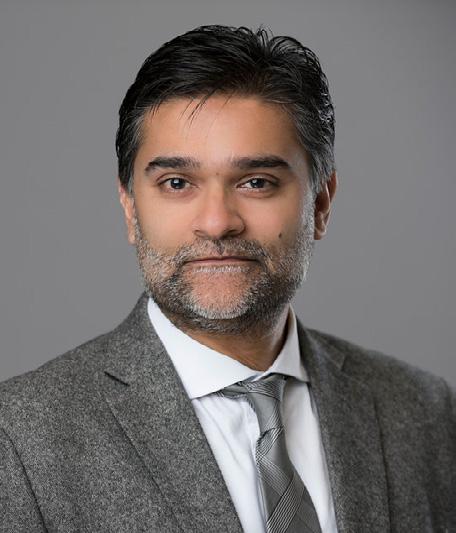
Our feature continues with our conversation with Sanjive Vaidya, Architectural Technology Department Chair at The New York City College of Technology talking about one of the biggest questions on his mind this year: “Why are these students who are smart and hardworking studying Architecture?”
“Why not study something else that pays well and where you can support your family. This is what I have spent several months trying to answer. With a student body of about 60% that come from households that make less than 30k per, I’m on a search for answers as to what to tell these students and how to train them. Either we declare what we’re training them to be or we tell them the truth, that we’re teaching them how to be employees and nothing more.”
Starting off our conversation with such a heavy question, one might assume that Vaidya has always been a fierce advocate. We asked about how he came to Architecture himself and the answer was a pleasant surprise and a small background into Vaidya’s current perspective. “My father is an Architect and that’s how I was introduced.”
Originally from India, Vaidya’s father became an Architect in the 60’s and as he describes it, “S really amazing and historical moment in history. He found common cause with the community at Howard University in Washington DC. He was an artist who left India and found that Howard was a venue where he could use his skills quite well. So, that’s where he was trained and he became an Architect in Washington, D.C. When I was a kid, he became the Chief Architect at D.C. General Hospital. D.C. General Hospital was a free, social hospital that was started by the infamous D.C. Mayor Marion Barry. I got to see the function of that hospital and I think those types of things are very important because since it was not a profit driven hospital, the powers that be tried to snuff it out. Marion Barry was seminal character in DC and had some troubles but he was a civil rights leader and he did a lot for that community. D.C. General Hospital was one of his key projects.”
Through his father’s work, Vaidya was able to see the civic aspect of the profession, which is a key point of view that he is trying to bring to the students at City Tech. “It’s a challenge to have the students see the range of how they can affect change because they’re doing so many different things and are very busy.”
With a population that is about 35% Hispanic and 30% Black students, it’s very apparent especially after the last election, just how much mistrust in government these students have. “There’s a mistrust of government or they haven’t been served by government in a particular way. CUNY is wonderful and I‘m a huge fan now that I’ve been there for some time but our facilities are abysmal. If this is a reflection of the city, then of course you’re not going to want to be involved. The environment makes a difference. There’s no oak paneled libraries for students to be inspired. The toilet doesn’t flush and that’s what the students remember. CUNY has 26 colleges throughout the 5 boroughs with about 275,000 students annually. In comparison to one of the leading private colleges which has about 30 students, the two have about the same annual budget. This structural problem upsets me.
“When you come from a low-income background, does that mean you don’t have a say in your environment? I feel like that’s what the profession has been saying. Students are taught that they have to run. We need to make space for students to reflect and not always run from one job to the next or from one thing to the other.”
The NY City Tech Architectural Technology program is very aware of students’ varying schedules and adapts to accommodate how students can learn through the availability of night classes as well as flexibility in course scheduling. One solution that Vaidya has been thinking about is having rotations, similar to medical professionals. The idea is that students can become the type of professionals who come out of school knowing that they can be advocates. “I’m thinking about having programs where students can rotate. I’m not talking about through Architecture offices but through local politician offices, community development offices and homeless shelters in order to learn how Architects can be advocates for their community. Students should know that there are more places for them. I recognize that not all students will want to be an advocate and or civic minded but they need exposure to that being a possibility. Our role as educators is to have a better conversation with these students to find out what their strengths are and build a curriculum around that. We have already built a new professional pathway through the NAAB accreditation, So now students have a choice of avenue they want to go down.”
City Tech has held a couple of town halls, has encouraged students to sit on AIA panel discussions and Vaidya has personally spoken with a number of students and realizes, “‘it’s hard when you’re in “survival mode” to pull your head up and say these are the grander reasons why I’m doing anything. Right now, for many students, it’s just about survival and getting the right certifications. The game has already been set and now they’re just trying to get to the next level. For many students, the end game is just getting to a job. What I’m arguing is that BIPOC students need to be guided towards advocacy and leadership because if we keep putting them towards jobs, we miss out on valuable capital that can transform NYC. This is a really big deal because it’s about the building of Trust. Without the fundamental component of trust, it is hard for any community to accept Architecture students.”
Vaidya has been the chair of the department for 5 years, but has spent the bulk of the past decade with the school. On stepping into the role of chair, Vaidya says that he has always had the agenda to get more engagement out of the students. “I’m inherently very interested in politics and civic conversations that happen in this city. I think the election of the current president was traumatic in a short time. He went after DACA after which I had a regular, long line of students who were awfully and unfairly affected by this. This changed a lot. I was not prepared for some of these students who were sitting in my office and getting a phone call that their father is going to get deported.”
Another important agenda item for Vaidya is to provide pipelines. “One of the other things I have been going on about is pipelines. A lot of our students don’t have solid preparatory education, which reduces their competitive abilities. This is one of reasons why I like the DOB program, we have four years to give them as many tools as possible. They go there and learn processes and skills. After working there for a while, they have pretty heavy duty, marketable skills so if they want to apply for an SOM or one of the big firms, they can come in as an upper-level Architect. This also allows them to compete with their contemporaries, if they want to go in that direction.
“We have a connection with a number of career and technical high schools and I’m drawing a line from high school to college and what they do afterwards and using that to launch them wherever they want to go.”
Vaidya goes on to explain some of the ways City Tech is working on giving the students the kind of education he thinks will be beneficial to them. “We’re building alliances with non-traditional departments at our college. We have a good relationship with the African American Studies program and we have been inviting faculty to come and sit in on reviews. Last year, we had a collaboration with the nursing program wherein students worked on a community center in Brownsville. I think reaching out to other disciplines is a step in that direction. We have created a number of mentoring programs, peer to peer mentoring and professional mentoring through the Arch league, where they are matching students with Architects. This program is only in its second or third year but as it
continues to grow, we would like to get non-Architectural and allied professionals to be involved with mentoring the students. Our faculty is amazing, they work so many hours above and beyond what’s in their job description. One thing we are building into our degree is more flexibility and more curriculum changes — which is really hard to do. We’re hoping these curriculum changes can be much more responsive to the informal jobs market — meaning things like digital fabricators or scaffolding and façade work. This is a way to build other entry points into the profession.
“City Tech is born out of a GI bill, after World War II, Vets were coming back and learning trades and crafts to get jobs. NY City Tech’s Architectural Technology Department was created to teach these Veterans skills like drafting to be able to serve professionals. It started as a two-year degree program and turned into a 4-year degree. It’s different now. We shouldn’t be putting minorities in an employment pipeline because we’re not unleashing their full potential.
“Walking through protests this summer and experiencing the police as a black or brown person, that’s when you question whether you belong. That’s why I’m trying to figure out what this profession is telling young people. It’s either you’re in or you’re not-so declare it. Honestly, I don’t have hope in the profession — this profession has had how many hundreds of years to get its act right?! I think the answers are going to come from a better integration with these students in the community. We have to place the students into places where they can exercise their power. I’m really skeptical of the profession because it’s been so long. There are no mechanisms to solve the situation within the profession. For example, we have a really good program with the NYC Department of Buildings where they meet with students over 8 no-work seminars. They help students with their resumes, cover letters and portfolios and usually have about 40 students in the program. They then take about 13 or so for the summer internships and after they graduate, the DOB may hire 3 or 4 to work there full-time. An agency like the DOB has mechanisms, like a diversity officer, who oversees who’s getting hired and who’s moving up. When I compare it to a large Architecture office, they don’t have the same mechanisms for hiring. Its hard to go to the private companies and just ask them to change because the mechanisms are not there. I’m not saying they’re saddled with all the blame, it’s just that as a community, this has been going on for such a long time.
“The BLM movement and students writing letters to their schools have really put a focus on our program. I’ve met with about half a dozen private Architecture programs who have asked what they can do to help. CWB Architects have committed to helping with City Tech. Todd Williams and Billie Tsien have taken 14 mentorships, the Architectural League program has also been growing.”
In 2017, the first class made up of about 15 students entered into City Tech and will begin next semester taking classes that will be credited towards the first Bachelor of Architecture graduating class. Vaidya shouts out 2 of the faculty at the college with making this NAAB Accredited program a reality. ‘I can’t say enough amazing things about Claudia Hernandez and Ting Chin — the amount of time and dedication and vetting that they put into getting this accreditation has been incredible.’
We ended our conversation with Vaidya with him telling us a little about what he envisions for the future. “I worked for Max Bond at Davis Brody Bond for about 8 years and he was an incredible force to be around. Under his attention, I saw a lot more about the intersection of culture, politics and art in a way that hadn’t been talked about in school. I got to see things from his perspective and that was an important exposure for me as a young person. I see myself as a spokesperson for my students and even though I’ve come late to table of serving these students and I’m not a longtime activist, my main focus is about these students. There is a Social Mobility Index that shows how you rise in your career however, it doesn’t expose you to understanding the potentiality of your thoughts, how you apply yourself to your community or even what that community is. Students don’t have a chance to think about these things even though it seems so obvious — it really isn’t obvious but it’s important. What I tell students is that nobody is coming to save you. You and your colleagues are your own keepers and advocate for one another. You need to look out for each other because you can’t assume there is an outside network that is coming to rescue you. That being said, if everyone feels like they have contributed and have been a part of the solution, that’s the only way that people can work together towards moving forward.”
Both Dean Harriet Harriss and Chairman Sanjive Vaidya learned what it’s like to lead their Schools through a global pandemic and a racial justice movement. As we all find ourselves learning new things and dealing with a whole new kind of existence, the importance of strong leadership has been magnified. Through all of what 2020 has brought with it, these two Heads of the class have certainly ushered in the inspiration and forward thinking that can’t help but restore your faith in the education of the Architect and the future of the profession.
“Citi” drawing by Noushin Jafari, Assoc. AIA
